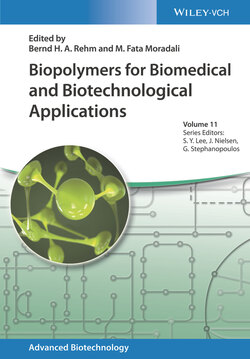Читать книгу Biopolymers for Biomedical and Biotechnological Applications - Группа авторов - Страница 26
2.3.2 Scleroglucan
ОглавлениеScleroglucan is a water‐soluble homopolymer of β‐glucans produced by filamentous fungi, especially of the genus Sclerotium as part of the adhesion mechanism to plant tissues [16,88]. Scleroglucan was first commercialized in the 1970s, being currently available under different trademarks (e.g. Clearogel, Polytetran, Polytran FS, Actigum) [88,89].
Scleroglucan is a thermostable biopolymer and, due to its nonionic nature, is stable over a wide range of pH (2.5–12). Scleroglucan solution exhibits shear thinning behavior; it acts as foam stabilizer and has a good emulsifying capacity. Further, it also exhibits biological activity. The interesting physicochemical and biological properties enable the use of scleroglucan on several industrial applications. Initially, scleroglucan was used in the oil industry [90,91]. Nowadays it is used as thickener in paintings and in pesticides [16]. In the biomedical field it is used in edible films, tablets, and granulates, showing to be a good matrix for the controlled release of active substances. Pharmaceutical applications include the use in tablet coatings, ophthalmic solutions, injectable antibiotic suspensions, and calamine lotion [92]. In the food industry scleroglucan is used for the stabilization of dressings and ice creams. Numerous patents describe quality improvement of frozen or heat‐treated edibles. In Europe it is mainly used in cosmetic products for the skin, such as body washes, shampoos, conditioners, and eyeliners [16,93,94].
